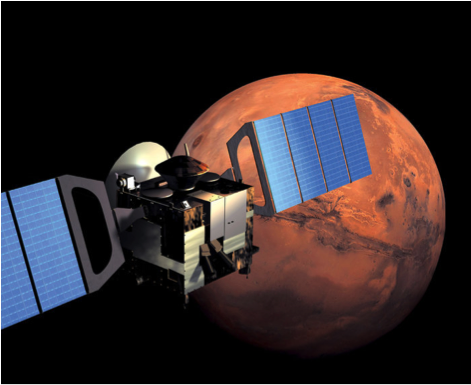- SPICAM UV RDR DATA
- Nominal Mission, 9 Jan 2004 - 19 Dec 2005
- Extended Mission 1, 19 Dec 2005 - 27 Aug 2007
- Extended Mission 2, 27 Aug 2007 - 13 Dec 2009
- Extended Mission 3, 13 Dec 2009 - 6 Jan 2013
- Extended Mission 4, 6 Jan 2013 - 5 Jan 2015
- SPICAM UV EDR DATA
- Nominal Mission, 19 Jun 2003 - 19 Dec 2005
- Extended Mission 1, 19 Dec 2005 - 27 Aug 2007
- Extended Mission 2, 27 Aug 2007 - 13 Dec 2009
- Extended Mission 3, 13 Dec 2009 - 6 Jan 2013
- Extended Mission 4, 6 Jan 2013 - 5 Jan 2015
- SPICAM IR RDR DATA
- Nominal Mission,9 Jan 2004 - 19 Dec 2005
- Extended Mission 1,19 Dec 2005 - 27 Aug 2007
- Extended Mission 2,27 Aug 2007 - 13 Dec 2009
- Extended Mission 3,15 Dec 2009 - 6 Jan 2013
- Extended Mission 4,6 Jan 2013 - 5 Jan 2015
- Extended Mission 5,5 Jan 2015 - 3 Jan 2016
- SPICAM IR EDR DATA
- Nominal Mission, 19 Jun 2003 - 19 Dec 2005
- Extended Mission 1, 19 Dec 2005 - 27 Aug 2007
- Extended Mission 2, 27 Aug 2007 - 13 Dec 2009
- Extended Mission 3, 15 Dec 2009 - 31 Dec 2012
- Extended Mission 4, 6 Jan 2013 - 5 Jan 2015
- Extended Mission 5, 5 Jan 2015 - 31 Dec 2016
- Extended Mission 6, 1 Jan 2017 - 27 Dec 2018
-
Extended Mission 7, 28 Dec 2018 - 24 Dec 2020

Jun 30, 2003 (Ls 212.4 MY 26) to [ongoing]

An Artist's concept of the Mars Express Spacecraft at Mars/ESA

A breadboard of the SPICAM Instrument
SPICAM is a Mars Express instrument designed to measure the composition of the Martian atmosphere. It is an imaging spectrometer for ultraviolet and infrared radiation that was designed to acquire atmospheric data utilizing limb grazing and stellar occultation techniques. These data include vertical profiles of carbon dioxide, temperature, ozone, aerosols and clouds. It measures ozone using a technique similar to that used on the Mariner 9 spacecraft.
The SPICAM instrument has two channels, one in the ultraviolet wavelength range (118-320 nanometers) (SUV) and another in the near infrared wavelength range (1.1-1.7 micrometers) (SIR) . The instrument has a spectral resolution of 0.8 nm/pix at 1.5μ and is composed of an entrance lens, an AOTF and two single pixels detectors (for each polarization). As the AOTF acts as a filter, the IR & UV spectrum is obtained by electrically scanning the AOTF frequency.
The primary source for SPICAM data is the ESA Planetary Science Archive (PSA)
Through a cooperative agreement between ESA and NASA, the PDS Geosciences Node will host a copy of the SPICAM data archive on their web site when it becomes available to them. This data is housed in the GEO node and at PSA. Geo data may be more accessible but there may be more recent data available at the PSA.
Useful Mission Documents
Retrieve the IR data volume
VOLUMES
mex-m-spi-2-iredr-rawxmars-ext1-v2
mex-m-spi-2-iredr-rawxmars-ext2-v2
mex-m-spi-2-iredr-rawxmars-ext3-v2
mex-m-spi-2-iredr-rawxmars-ext4-v1
mex-m-spi-2-iredr-rawxmars-ext5-v1
mex-m-spi-2-iredr-rawxmars-ext6-v1
mex-m-spi-2-iredr-rawxmars-ext7-v1
mex-m-spi-2-irrdr-cleaned-ext1-v1
mex-m-spi-2-irrdr-cleaned-ext2-v1
mex-m-spi-2-irrdr-cleaned-ext3-v1
mex-m-spi-2-irrdr-cleaned-ext4-v1
mex-m-spi-2-irrdr-cleaned-ext5-v1
mex-m-spi-2-irrdr-cleaned-v1
mex-m-spi-2-uvedr-rawxmars-ext1-v2
mex-m-spi-2-uvedr-rawxmars-ext2-,v2
mex-m-spi-2-uvedr-rawxmars-ext3-v2
mex-m-spi-2-uvedr-rawxmars-ext4-v1
mex-m-spi-2-uvrdr-cleaned-ext1-v1
mex-m-spi-2-uvrdr-cleaned-ext2-v1
mex-m-spi-2-uvrdr-cleaned-ext3-v1
mex-m-spi-2-uvrdr-cleaned-ext4-v1
mex-m-spi-2-uvrdr-cleaned-v1
Data
The SPICAM CRUISE/MARS UV EDR-RAW dataset contains raw measurements from the ultraviolet SPICAM spectrometer collected during the cruise and MARS phases of Mars Express. An easily viewed version of each record of the SPICAM CRUISE/MARS IR & UV EDR-RAW data set is shown in the browse directory.
The SPICAM instrument has two channels, one in the ultraviolet wavelength range (118-320 nanometers) (SUV) and another in the near infrared wavelength range (1.1-1.7 micrometers) (SIR) . The instrument has a spectral resolution of 0.8 nm/pix at 1.5μ and is composed of an entrance lens, an AOTF and two single pixels detectors (for each polarization). As the AOTF acts as a filter, the IR & UV spectrum is obtained by electrically scanning the AOTF frequency.
The primary source for SPICAM data is the ESA Planetary Science Archive (PSA)
Through a cooperative agreement between ESA and NASA, the PDS Geosciences Node will host a copy of the SPICAM data archive on their web site when it becomes available to them. This data is housed in the GEO node and at PSA. Geo data may be more accessible but there may be more recent data available at the PSA.
Useful Mission Documents
Description of data volume: UV, IR
Mission Description
Spacecraft Description
Instrument Description
Calibration Documents: UV, IR
Browse Directory: UV, IR
Documents Directory: UV, IR
Indexes: UV, IR
Geometry: UV, IR
References
Retrieve the UV data volumeMission Description
Spacecraft Description
Instrument Description
Calibration Documents: UV, IR
Browse Directory: UV, IR
Documents Directory: UV, IR
Indexes: UV, IR
Geometry: UV, IR
References
Retrieve the IR data volume
VOLUMES
mex-m-spi-2-iredr-rawxmars-ext1-v2
mex-m-spi-2-iredr-rawxmars-ext2-v2
mex-m-spi-2-iredr-rawxmars-ext3-v2
mex-m-spi-2-iredr-rawxmars-ext4-v1
mex-m-spi-2-iredr-rawxmars-ext5-v1
mex-m-spi-2-iredr-rawxmars-ext6-v1
mex-m-spi-2-iredr-rawxmars-ext7-v1
mex-m-spi-2-irrdr-cleaned-ext1-v1
mex-m-spi-2-irrdr-cleaned-ext2-v1
mex-m-spi-2-irrdr-cleaned-ext3-v1
mex-m-spi-2-irrdr-cleaned-ext4-v1
mex-m-spi-2-irrdr-cleaned-ext5-v1
mex-m-spi-2-irrdr-cleaned-v1
mex-m-spi-2-uvedr-rawxmars-ext1-v2
mex-m-spi-2-uvedr-rawxmars-ext2-,v2
mex-m-spi-2-uvedr-rawxmars-ext3-v2
mex-m-spi-2-uvedr-rawxmars-ext4-v1
mex-m-spi-2-uvrdr-cleaned-ext1-v1
mex-m-spi-2-uvrdr-cleaned-ext2-v1
mex-m-spi-2-uvrdr-cleaned-ext3-v1
mex-m-spi-2-uvrdr-cleaned-ext4-v1
mex-m-spi-2-uvrdr-cleaned-v1
Data
The SPICAM CRUISE/MARS UV EDR-RAW dataset contains raw measurements from the ultraviolet SPICAM spectrometer collected during the cruise and MARS phases of Mars Express. An easily viewed version of each record of the SPICAM CRUISE/MARS IR & UV EDR-RAW data set is shown in the browse directory.
 PDS: The Planetary Atmospheres Node
PDS: The Planetary Atmospheres Node

